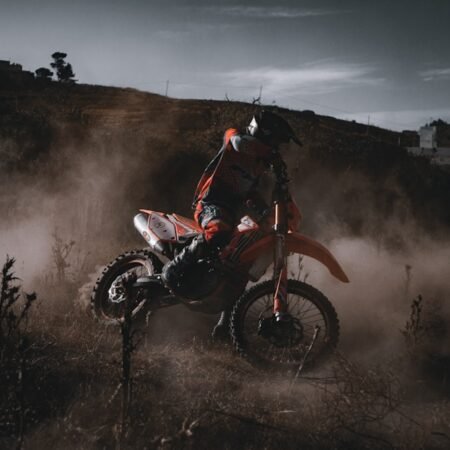A remote shutter release is an essential tool for photographers, especially those who specialize in landscape, wildlife, and long exposure photography. It allows the photographer to trigger the camera’s shutter without physically touching the camera, which can help reduce camera shake and ensure sharp, clear images. This is particularly important when shooting with longer focal lengths or in low light conditions where any movement can result in blurry images.
In addition to reducing camera shake, a remote shutter release also allows photographers to capture images from a distance, making it ideal for wildlife and nature photography. It also enables photographers to take self-portraits or group shots without having to rely on a timer or ask someone else to take the photo. Overall, a remote shutter release can greatly improve the quality and versatility of a photographer’s work, making it an essential tool for any serious photographer.
Factors to Consider When Choosing a Remote Shutter Release
When choosing a remote shutter release, there are several factors to consider to ensure that you select the right one for your specific needs. One of the most important factors to consider is compatibility with your camera model. Not all remote shutter releases are compatible with every camera, so it’s essential to check the compatibility list before making a purchase.
Another important factor to consider is the type of photography you specialize in. For example, if you primarily shoot wildlife or sports photography, you may want a remote shutter release with a longer range to allow you to trigger the camera from a greater distance. On the other hand, if you specialize in long exposure photography, you may want a remote shutter release with a timer function to allow for extended exposures.
Additionally, consider the build quality and durability of the remote shutter release. Look for one that is well-built and weather-sealed if you plan on shooting in challenging conditions. Finally, consider the features and functionality that are important to you, such as wireless connectivity, interval shooting, or bulb mode support.
Types of Remote Shutter Releases and Their Features
There are several types of remote shutter releases available on the market, each with its own unique features and functionality. The most common type is a wired remote shutter release, which connects to the camera via a cable and allows the photographer to trigger the shutter remotely. These are typically simple and reliable, making them a popular choice for many photographers.
Another type of remote shutter release is a wireless remote, which uses radio frequency or infrared signals to trigger the camera’s shutter wirelessly. These are ideal for situations where a wired connection is impractical or when shooting from a distance. Some wireless remotes also offer additional features such as interval shooting and bulb mode support, making them versatile tools for a wide range of photography styles.
For photographers who want even more control over their camera’s shutter, there are also advanced remote shutter releases that offer features such as intervalometer functions, multiple exposure modes, and programmable settings. These advanced remotes are ideal for photographers who specialize in time-lapse photography or long exposure work and require precise control over their camera’s shutter.
Comparing Different Remote Shutter Releases on the Market
When comparing different remote shutter releases on the market, it’s important to consider factors such as compatibility, range, build quality, and features. Some popular options include the Canon RS-80N3 wired remote shutter release, which is compatible with many Canon DSLR cameras and offers a simple and reliable way to trigger the camera’s shutter remotely. For wireless options, the Nikon ML-L3 is a popular choice for Nikon DSLR users, offering infrared connectivity and a compact design.
For photographers who require more advanced features, options such as the Vello Wireless ShutterBoss II offer wireless connectivity, intervalometer functions, and programmable settings for precise control over the camera’s shutter. Similarly, the Hahnel Captur Pro is a versatile remote shutter release that offers wireless connectivity, intervalometer functions, and multiple exposure modes for advanced photography techniques.
Ultimately, the best remote shutter release for you will depend on your specific needs and preferences as a photographer. Consider factors such as compatibility with your camera model, range, build quality, and features to find the right remote shutter release for your photography style.
How to Use a Remote Shutter Release to Improve Your Photography
Using a remote shutter release can greatly improve your photography by reducing camera shake and allowing you to capture images from a distance. When shooting with longer focal lengths or in low light conditions, any movement can result in blurry images. Using a remote shutter release allows you to trigger the camera’s shutter without physically touching it, reducing the risk of camera shake and ensuring sharp, clear images.
In addition to reducing camera shake, a remote shutter release also allows you to capture images from a distance, making it ideal for wildlife and nature photography. It also enables you to take self-portraits or group shots without having to rely on a timer or ask someone else to take the photo. Overall, using a remote shutter release can greatly improve the quality and versatility of your work as a photographer.
Tips for Selecting the Best Remote Shutter Release for Your Camera
When selecting the best remote shutter release for your camera, there are several tips to keep in mind to ensure that you choose the right one for your specific needs. First and foremost, check the compatibility of the remote shutter release with your camera model. Not all remotes are compatible with every camera, so it’s essential to check the compatibility list before making a purchase.
Consider the type of photography you specialize in and choose a remote shutter release that offers the features and functionality that are important to you. For example, if you primarily shoot wildlife or sports photography, you may want a remote with a longer range to allow you to trigger the camera from a greater distance. On the other hand, if you specialize in long exposure photography, you may want a remote with a timer function to allow for extended exposures.
Additionally, consider the build quality and durability of the remote shutter release. Look for one that is well-built and weather-sealed if you plan on shooting in challenging conditions. Finally, consider any additional features that may be important to you, such as wireless connectivity, interval shooting, or bulb mode support.
Enhancing Your Photography Skills with the Right Remote Shutter Release
Enhancing your photography skills with the right remote shutter release can greatly improve your work as a photographer. By reducing camera shake and allowing you to capture images from a distance, a remote shutter release can help ensure sharp, clear images in challenging shooting conditions. It also enables you to take self-portraits or group shots without having to rely on a timer or ask someone else to take the photo.
In addition to improving image quality and versatility, using a remote shutter release can also open up new creative possibilities for your photography. For example, using an intervalometer function can allow you to capture stunning time-lapse sequences or long exposure images that would be impossible to achieve without a remote shutter release. Similarly, using multiple exposure modes can enable you to experiment with creative techniques and produce unique and compelling images.
Overall, by selecting the right remote shutter release for your specific needs and preferences as a photographer, you can greatly enhance your photography skills and expand your creative possibilities. Whether you specialize in wildlife photography, long exposure work, or any other style of photography, using a remote shutter release can help take your work to the next level.








